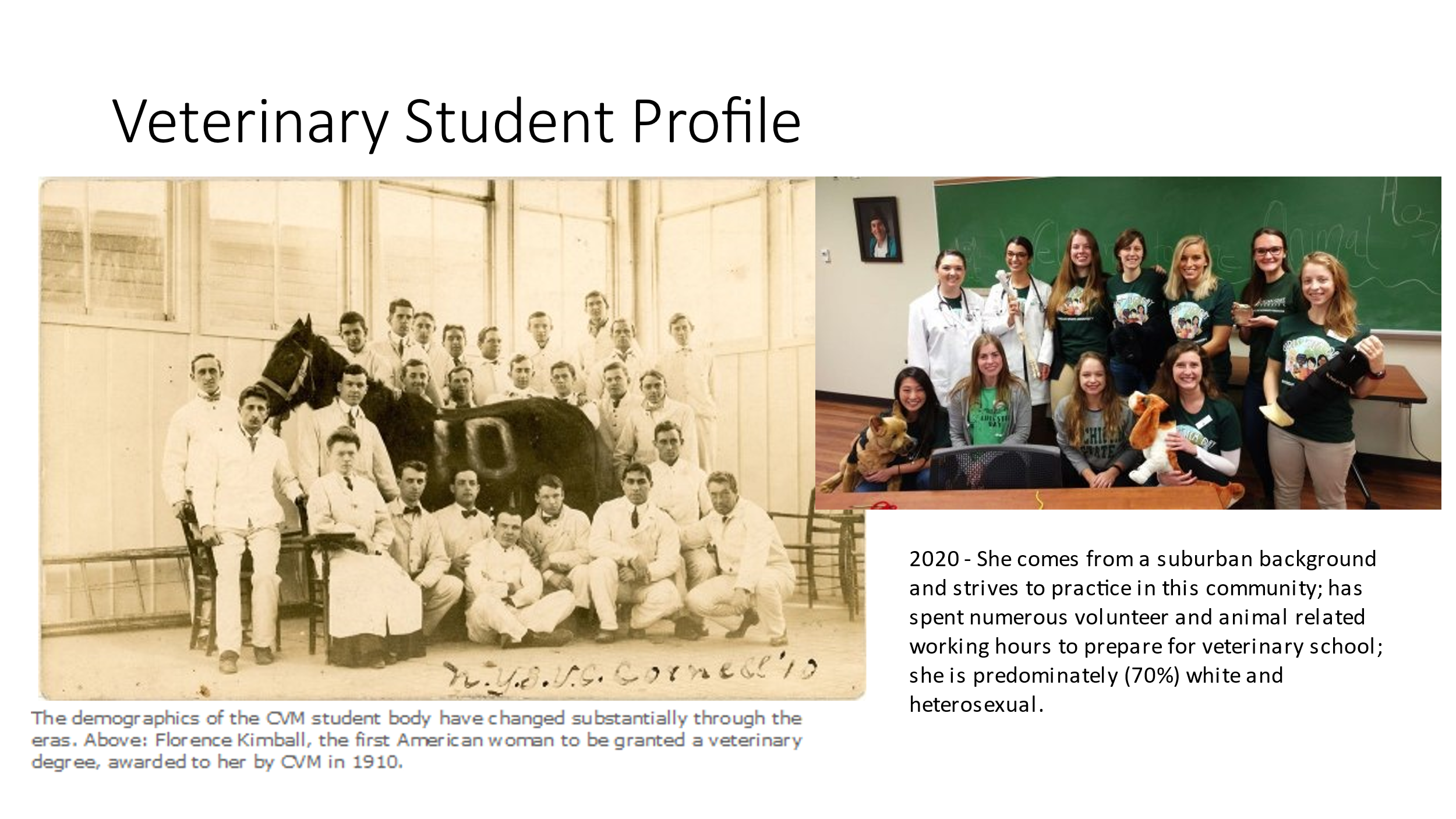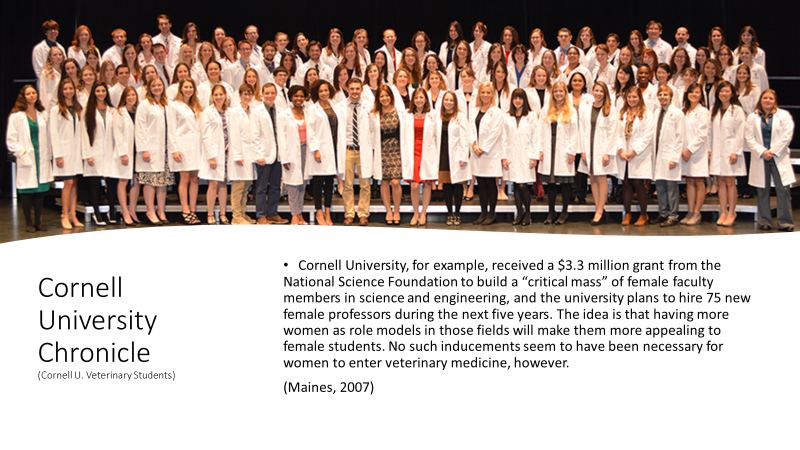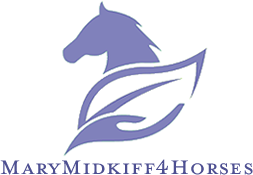I wrote a term paper for one of my University of Kentucky graduate courses in 2021 on the “Ripple Effect of the Gender Shift in the Veterinary Profession.” I was astonished at the “quick” shift from the 1960s to today’s male to female ratio of veterinary students in the United States, and in the United Kingdom as well. From 30% females to now 80% females in veterinary schools; this change of “identity” comes from many directions and is having a variety of effects.

Cornell Veterinary Medicine (CVM)
I started my research by looking at the Course Listings from prominent American veterinary schools. Those that provided the course curriculum from years one through completion were chosen; and those that provided course listings from the past four decades were selected. They were Auburn University, Ohio State University, University of Tennessee and Purdue University. I read through four decades from 1990-2020 picking up on the “core” courses offered to veterinary students. I kept a list of courses offered to learn if they had changed, been altered, been updated, dropped, or added to the curriculum that year. I found that indeed several courses over the forty years had been dropped or changed to be replaced by Professional Development, Business Skills, Diversity certifications, Client Relations, and Wellness and Ethics in 2020.
Also, clinical rotations reserved for senior students only in the past, were now included in earlier years of a student’s course plan.
Subjects relating to business and personal development are helpful to all students but I have to equate a great deal of the shift away from a majority of clinical lecture hours to the increasing population of female veterinary students. If you look at “context”, veterinary schools with strict science, book knowledge, rote education, a dominance of male professors, and a masculine tradition, did not and does not attract today’s veterinary students which are predominantly female. Females tend to prefer an approach to their veterinary career with support from many areas which can make their jobs successful.
A “supportive” context would value inclusion, diversity, equality, work-life balance, a variety of learning styles, mentorship, experiential learning, internships, business guidance, finance management, client relations and female leadership. This context is how we have seen and are seeing veterinary schools shift to meet the new demographics.
According to Michigan State University: College of Veterinary Medicine Curriculum Reinvention, 2017, “Learning will focus on real-world application, moving away from straight lectures. The new modular curriculum plan will allow students to approach each subject in components that may include interactive electronic lessons and self-assessments, as well as clinical, hands-on learning. This is in contrast to the current model of linear, didactic knowledge acquisition followed by clinical training.”
The new demographics from the U.S. to the U.K. indicate over 70% female veterinary students. They are white, academically talented, suburban women seeking to practice veterinary medicine mainly with small animals. Research shows that women have been drawn to veterinary medicine but not to the other medical or scientific pursuits such as engineering due to the following:
Women’s Increase in Veterinary Schools
- Technological change (improvements in animal restraint)
- Increase in female role models and female professors
- Family-friendly flexible work schedule
- Family-friendly flexible work schedule
- Reduction in admissions barriers such as discrimination
- Socialization of women as nurturers
- Love of animals
- U.S. Law passed in 1972, Title IX Education Amendment, abolished gender discrimination in federally funded education (U.K. Equality Act of 2010)
Men’s Decrease in Veterinary Schools
- Stagnant income (not comparable to human medicine or meeting with inflation)
- Stigma of working with women, going through veterinary school with female majority in classes
- Loss of autonomy
- Loss of prestige
- (Schweitzer 2007; Smith 2006) (Lincoln, 2010)

Articles on the subject of how the feminization of veterinary medicine will affect the animal industry, animal welfare and healthcare, the business of animals, costs around keeping and rescuing animals and more. Today most of the private and corporate veterinary practices still have male leadership but that will change as the average age of those leaders is over 50. The changing of the guard will happen sooner than later.
We have significant challenges in front of us on the “animal welfare versus animal rights versus ethics” arguments, political and moral demonstrations, and policy making fronts. I believe that the leadership of veterinary medicine will play an integral role in how these disparate groups will move forward and think about how we use animals and how domestication is performed.
Women will be handed the torch for guidance and direction of these fragile but important issues. As the younger generations become the practicing veterinarians whether it be in private, corporate, partnership clinics; in an over-seeing government role; in meat and textile regulation; in transportation of animals and movement within or outside of each country; or in deciding how to control animal populations we now know they will be predominantly women. We aren’t seeing this phenomenon in any other of the medical or science fields, they continue to be male dominated.
“Demands on higher education to prepare graduates for complex, dynamic and information based social and occupational experiences,” is the response from Cleveland-Innes and Emes article Principles of Learner-centered Curriculum: Responding to the Call for Change in Higher Education. “Curricula that prepare students with appropriate knowledge and skills to maneuver a changed and changing society is in order.” (2005)
We are looking at a new paradigm in veterinary medicine. We will be in the experimental stages as we see women graduate from veterinary schools, take on active veterinary roles and evolve, taking on more and more responsibility in the veterinary arena. Just as in many former eras of escape from servitude, we are now looking at an era of assimilation into power. Women are gaining the majority over the animal industries and will subsequently take over the leading roles. I am looking forward to reading, listening, and watching how we will handle our newly found power.
Obviously, now more than ever, the media will play a big part in what happens in its treatment of animal welfare and animal rights confrontations; protests are in the daily news. The media will seek out experts to find solutions and ways of handling delicate and sensitive information. Female veterinarians and agriculture leadership will be the source for what happens next.
“Whole dimensions should change more or less simultaneously across universities.” We are seeing this wave of gender representation and curriculum change throughout American, Canadian and some European veterinary education institutions.
(Frank et.al., 1994)
As a professor of equine studies, I have enjoyed nurturing, mentoring and leading female students pursuing a career in veterinary medicine. And I hope I have set them up for success in what’s to come next for them! They can and will be shaping many of our cultural changes.

